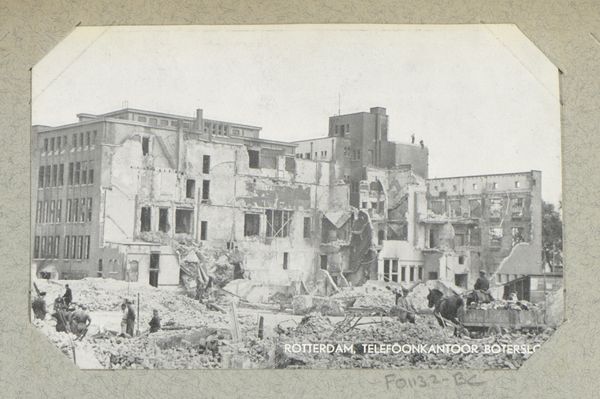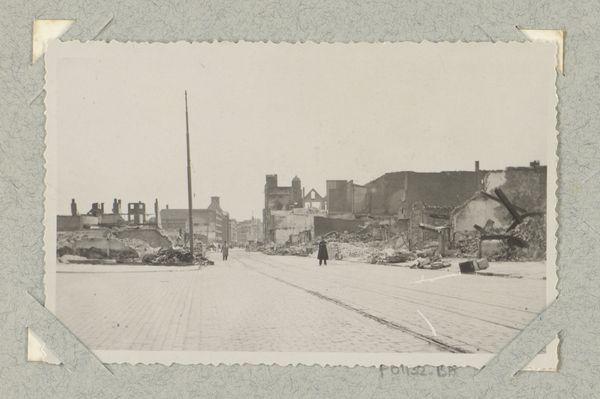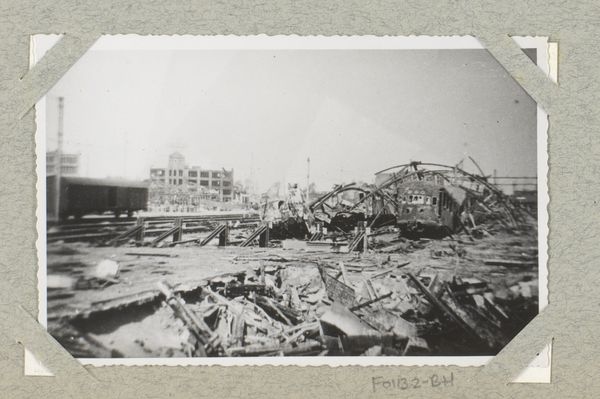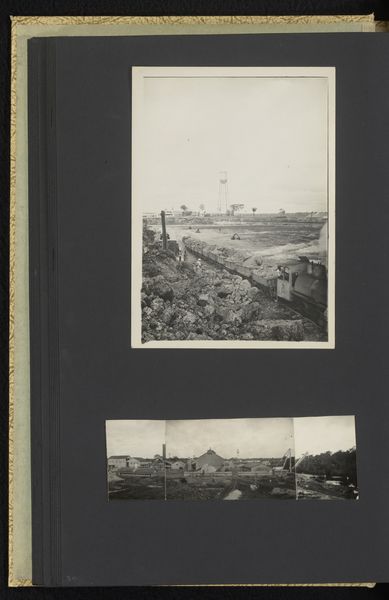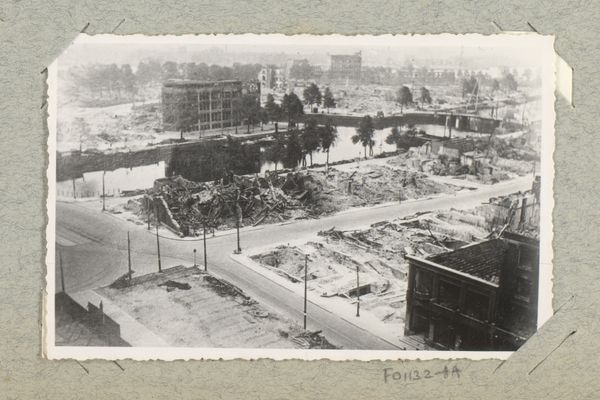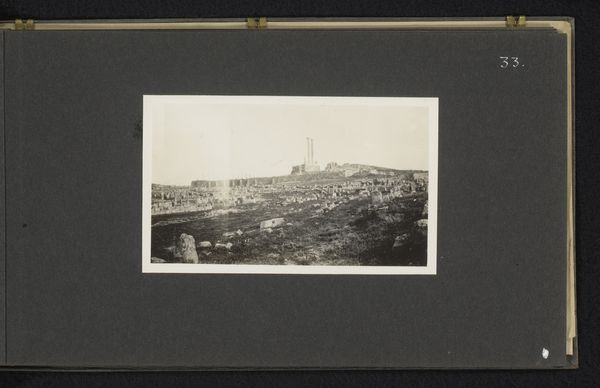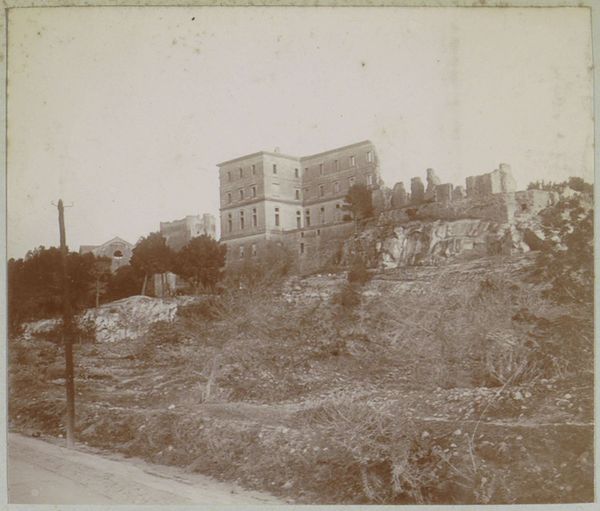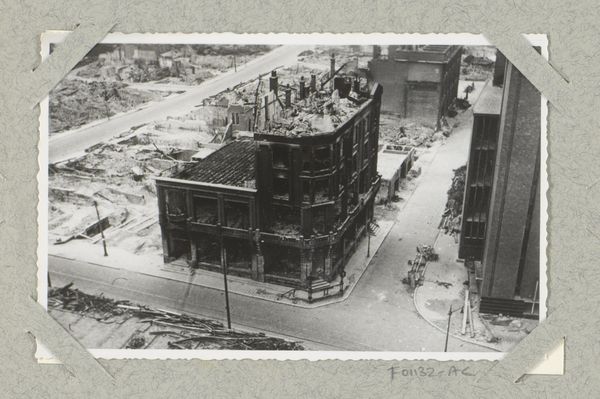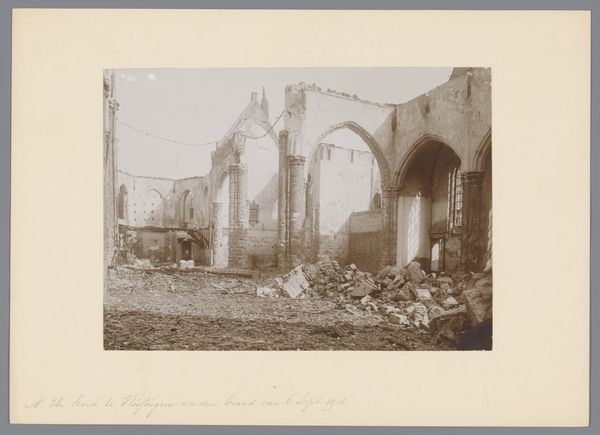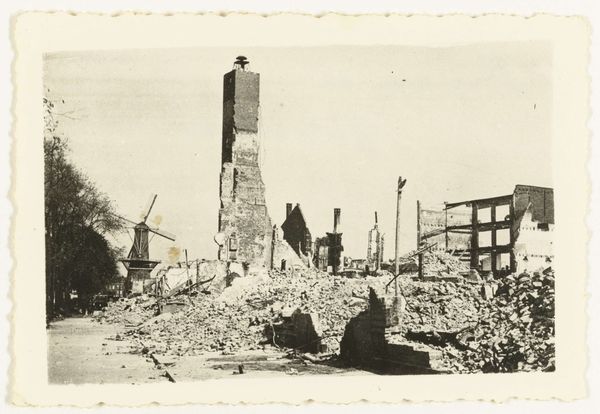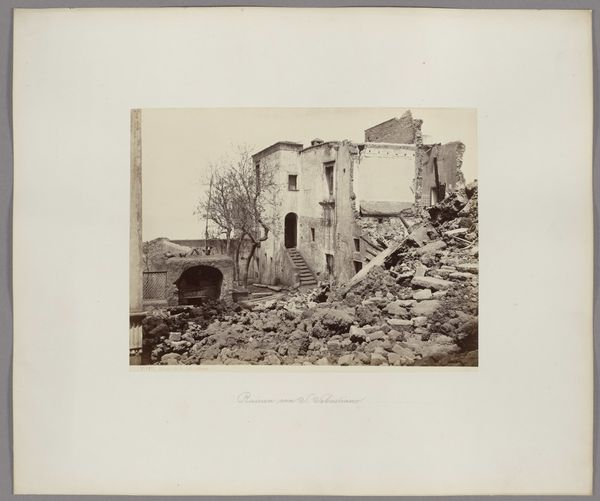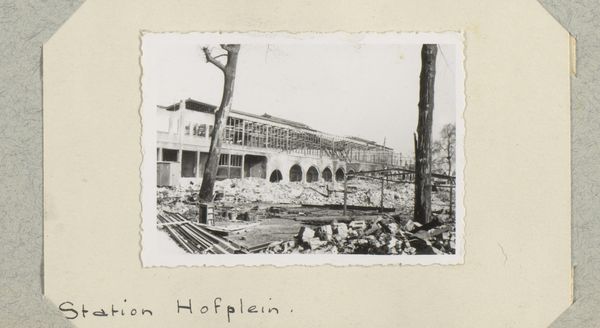
photography
#
archive photography
#
photography
#
photojournalism
#
cityscape
Dimensions: height 63 mm, width 85 mm
Copyright: Rijks Museum: Open Domain
Curator: Today we are looking at “Ruïnes bij de Vogelenzang”, a photograph taken by J. Nolte circa 1940-1945. It captures the desolation of a cityscape, reduced to rubble. What are your first impressions? Editor: My first impression is how desolate the image feels, despite the clarity of the photographic print. The monochrome palette only enhances the utter ruin. There's a disturbing flatness to the composition. Curator: Indeed. Nolte employs a stark contrast between the piles of debris in the foreground and the skeletal remains of buildings behind. This highlights the severe damage. Notice the composition and how the receding buildings form a clear linear perspective. Editor: Precisely, and it's important to note when this photograph was taken. Between 1940 and 1945; the implications are huge. The historical context positions this photograph firmly within narratives of conflict and loss, most obviously WWII. Whose stories does this rubble speak for? Curator: Undoubtedly. We can assume this image holds strong anti-war sentiments, but focusing on purely visual aspects we find the geometric balance in the piles of brick, repeated in broken facades creates a powerful visual statement. Editor: Yet, isn't that very formal composition almost at odds with the chaotic reality it depicts? Almost romanticizing destruction? It demands, instead, that we confront the brutal realities of war and reflect on its human cost beyond mere aesthetics. Curator: A valid interpretation, of course, however, this perspective runs the risk of negating Nolte’s technical expertise and visual strategies of the image itself. Look at how light is utilized to subtly guide our eye throughout the damage. Editor: Fair, but as an archival photograph it's very existence and survival through history, in itself serves to document destruction—a sobering memento that demands political action and remembrance, and resistance to any violence. Curator: An important and meaningful aspect! For me, it is also about interpreting Nolte's intention in shaping chaos into a structured visual experience through light and perspective. Editor: Which really highlights the interesting contradictions inherent in a photograph depicting a landscape ravaged by war; it makes a statement but also presents some striking observations about our perspective and understanding, wouldn’t you agree?
Comments
No comments
Be the first to comment and join the conversation on the ultimate creative platform.

